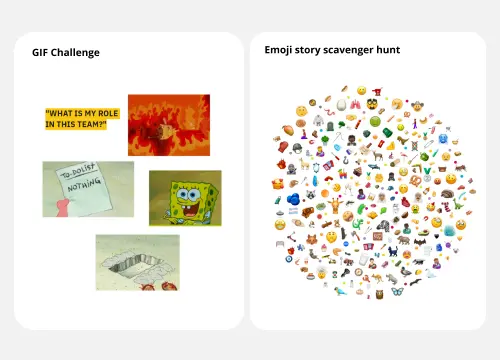About the Icebreaker Template
When new people join a company or a team, it can be hard for everyone to get to know each other. This is especially true for remote and distributed teams. Icebreakers are games, activities, questions, or events that are used to get people comfortable with each other and bring everyone together. Effective icebreakers can warm up a conversation, reinforce the topic of discussion, and ensure that everyone is engaged in a session.
Looking for new ideas for icebreakers? Read our blog on 27 icebreakers great for remote and in-house team building.
How do you use the icebreaker template?
First, pick a question and place it in the working area of your icebreaker template. Then, sketch, write, or paste a picture with your answer. When everyone is done, ask for each team member to explain their answer and also share yours.
When should you use an icebreaker?
Icebreakers can be used to add energy to any meeting. They are especially valuable when team members aren't all located in the same office, are meeting for the first time, or are tackling a new challenge together.
Examples of icebreakers
Some icebreakers can be used just for fun. When team members are new or don't know each other, icebreakers are great tools to help get the conversation flowing. Icebreakers can also be used to segue into the topic of the meeting, or to get everyone's energy levels up.
Here are some examples of icebreakers questions you can use:
Describe yourself in just a single word.
Share a photo of yourself as a baby.
What was your first job? Your worst job?
If you were an animal, what would you be and why?
If you could live anywhere, where would you live?
If you could meet a historical figure, who would that be?
What is your favorite time of the day? Why?
Do you like to travel or are you more of a homebody?
What would be your superpowers of choice?
If you could become an expert in any field in a snap, what field would you choose? Why?






